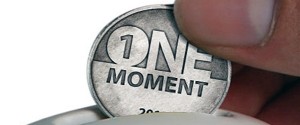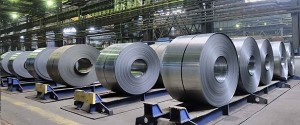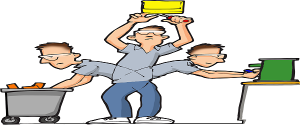
Motion is a waste common in both manufacturing and service industries. This waste is very similar to transportation waste, but relates to movement within a process. Transportation deals with movement between processes.
In manufacturing, motion is easy to see. It occurs when a material, tool or person moves. The shorter the movement, the faster the process will be and the more efficient the process. Some activities naturally have large amounts of motion built into them. For example, a warehouse pick operation requires an employee to visit different locations to fill orders. If the worker visits locations randomly, the motion between pick locations can be huge. If the pick routing is optimized, the worker will always move to the next closest pick location. (Note: Some may consider this movement transportation instead of motion since the worker is traveling between operations. For this example, the warehouse is defined as the work center and the movement is defined as motion within the process. Either view could be considered correct.)
In an office environment, motion is more subtle. Work is often completed with a computer. The motion isn’t a physical motion. Instead, the worker must navigate complex file structures and computer programs that make it difficult to complete basic activities.
Causes of Motion
Motion is typically a result of the physical design of a system. Some architectures place essential elements far apart, requiring a machine or person to move between the locations. In some cases, this is a result of efforts to make a process safe. For example, an operator may be required to leave an area before cycling a machine so that the machine doesn’t impact the operator. In other cases, the designer didn’t adequately consider motion when setting up the process.
In an office, motion can occur in a number of ways. It can result for the organization of files and materials on a desk. It can result for the computer file structure. It can be due to a program with an unnecessarily complex navigation and interface. The design of technology often creates added navigation as important information is stored in different places.
Results of Motion
Added motion slows processes, increases worker fatigue and increases wear and tear on equipment. Motion also creates safety hazards as greater movement of equipment risks impacting workers, and greater worker movement can lead to increases in strains and other injuries.
In an office environment, motion slows work and increases frustration levels. The amount of time spent jumping back and forth between programs can be substantial. This motion adds no value, but slows the employee and causes the employee to have to stop and start their work repeatedly.
Solutions for Motion
Reducing waste requires designing machines and work cells to minimize movement. This often requires layout changes and is typically an early step in the adoption of lean. One important element in reducing motion is ensuring that tools are available where they are needed. This makes 5S a great program for reducing motion waste. Tools and other essential materials are positioned for optimal placement and minimal motion. All non-essential items are removed from an area. The result is a work cell that is more productive with much less motion.
In an office environment, eliminating motion can be accomplished a number of different ways. One of the easiest is through training. Every computer program comes with shortcut key combinations that will speed productivity. Most people know at hitting Alt-Tab on a Windows computer will change windows, or that Ctrl-C will copy text and Ctrl-V will paste it. There are hundreds of shortcuts that can speed productivity and reduce motion.
Another step that improves productivity and reduces motion is changing the monitors employees use. A study by NEC found large monitors or dual monitors greatly improves worker productivity. With text editing tasks, workers completed 8-hours of work in 5.5 hours when switched they from a conventional 20” monitor to a 24” wide screen monitor. Workers with spreadsheet tasks had similar gains when switching from a single 20” monitor to dual 20” monitors. This means buying four employees a new monitor would yield as much additional productivity as would be gained by hiring another employee.
Redesigning computer programs and directory structures can also yield substantial results. Many companies have adopted strategies to improve the usability of their systems with tools such as information dashboards. These tools present information from a variety of sources on a single screen so an employee can quickly review and assess an entire process or project. Tools like this greatly reduce the motion wasted by employees switching screens and looking up information.




